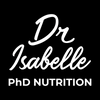LOWERING CHOLESTEROL THROUGH FOOD: WHAT REALLY WORKS

When we talk about cholesterol, we often focus on what to cut out : butter, eggs, red meat... But in reality, the key often lies in what we add to our plate. Certain foods can actually help lower “bad” cholesterol, protect your heart, and even reduce the risk of cardiovascular disease, without turning your diet into a long list of restrictions.
Let’s explore, with simple and practical tips, how your plate can become your best ally for taking care of your cholesterol levels.
Understanding the Difference Between “Good” and “Bad” Cholesterol
Cholesterol itself isn’t bad, in fact, it plays an essential role in hormone production and cell structure. The key difference lies in the type of cholesterol circulating in your blood :
-
LDL (Low-Density Lipoprotein), often called the “bad” cholesterol : can build up in your arteries when levels are too high, increasing your risk of cardiovascular disease.
-
HDL (High-Density Lipoprotein), the “good” cholesterol : helps transport excess cholesterol back to the liver so it can be eliminated.
The goal of nutrition strategies is to lower LDL while increasing HDL, helping protect your heart and maintain a healthy balance.
1. Focus on Soluble Fibre
Soluble fibre plays a particularly important role in managing cholesterol. It forms a gel in the digestive tract that traps some of the dietary cholesterol before it’s absorbed into the bloodstream.
Where to find it in your daily meals :
-
Oats and oat bran : perfect in oatmeal, smoothies, or homemade muffins.
-
Legumes (beans, lentils, chickpeas) : excellent in salads, soups, or tacos.
-
Fruits rich in pectin (apples, pears, citrus fruits) : great in snacks or desserts like apple crisp.
-
Chia seeds or psyllium : easy to sprinkle over yogurt or mix into overnight oats.
2. Add More Plant-Based Foods
Shifting toward a more plant-based diet, even partially, can have a significant impact on cholesterol. Plant foods provide fibre, antioxidants, and heart-healthy unsaturated fats, while also reducing the intake of animal-based saturated fats.
The Key Role of Soy
Soy is especially beneficial: rich in isoflavones, it can effectively lower LDL cholesterol while replacing animal sources higher in saturated fat.
Ways to include soy in your diet :
-
Add fortified soy beverage to your smoothies or oatmeal.
-
Try tofu in different ways : sautéed, crumbled, crispy, or marinated. Also great in stir-fries, grain bowls, or roasted vegetable trays.
-
Enjoy edamame : roasted as a crunchy snack or added to poke bowls and homemade soups.
-
Explore textured vegetable protein (TVP) as a meat substitute : perfect for shepherd’s pie, tacos, spaghetti sauce, meatballs, and more!
3. Phytosterols: Small Molecules, Big Impact
Phytosterols are plant compounds that closely resemble cholesterol. Because of their structure, they compete with cholesterol for absorption in the intestines, helping to lower blood cholesterol levels.
They occur naturally in certain plant foods, but usually in amounts too small to make a real difference. To reach the effective dose, about 2 grams per day, you may need fortified foods or phytosterol supplements. Seek guidance from a registered dietitian nutritionist specialized in cholesterol management before beginning any supplement.
4. Swap Saturated and Trans Fats for Healthy Fats
When it comes to fats, it’s not about cutting them all out, it’s about making better choices :
-
Unsaturated fats, mainly found in plant-based foods and certain fish, have protective effects on the heart.
-
Saturated and trans fats, found in red meat and many fried or processed foods, can throw this balance off.
Making gradual swaps can make a big difference for your cardiovascular health :
-
Limit red meat : replace part of your ground meat with TVP, opt for leaner proteins like poultry, or try more plant-based protein recipes.
-
Use vegetable oils for cooking instead of butter.
-
Cut back on fried, breaded, and ultra-processed foods : check nutrition labels for products with less than 5% saturated fat, or make healthier homemade versions like this air fryer fried chicken.
-
Add healthy fats to your meals : try avocado as a spread or sliced into salads, sprinkle nuts and seeds over your morning yogurt, or simply enjoy a small handful as a snack.
-
Include fatty fish rich in omega-3s : try baked salmon or trout, mix them into pasta dishes, or whip up a quick sardine spread for an easy lunch!
Combining These Changes for Lasting Results
Lowering cholesterol doesn’t mean deprivation : it’s an opportunity to discover new foods, diversify your meals, and support your heart health. The secret lies in consistency and combination : it’s the accumulation of small, daily choices that creates a real impact on your blood cholesterol levels.
Take action with personalized guidance and turn these tips into a concrete plan tailored to your lifestyle, preferences, and health goals. Book an appointment with a registered dietitian today, and make your plate your heart’s best ally!











Leave a comment